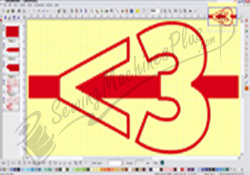
These power supplied generally top out at around 400 watts, though some more expensive and more powerful units are made. These include “small form factor” cases and those that are meant to hold smaller standardized motherboards, like Micro-ATX and Mini-ITX.

On the opposite end of the spectrum, some cases are too small for even a normal-sized ATX power supply. If you do have a monster PC, look up the case’s specifications: it will let you know the maximum dimensions of the power supply bay. Unless you specifically bought or built your computer to have a ton of power, you probably don’t have to worry about it. Sometimes these extra-large ATX power supplies will have trouble fitting into a standard case, and require oversized “gaming” or workstation cases. These are the monsters that can power high-end CPUs, multiple GPUs, arrays of storage drives, and a wind tunnel’s worth of cooling fans, stretching from 900 watts all the way up to 1200 watts and beyond. Some ATX-standard power supplies are longer than normal, stretching to eight or ten inches long, but keeping their width and height standardized.

These fit into almost all full-sized desktop computers, and you’ll find them ranging in power from around 300 watts all the way up to 850 watts. The most common size for power supplies is “ATX”-the same standard name for a consumer-grade “tower” computer. That’s what “form factor” means: there are a few standardized sizes for power supplies, and odds are that one of them will fit the case you’re already using. What Form Factor Should I Choose?Īfter you’ve determined how much power you need, you’ll need to find a power supply that physically fits in your computer. Add a little bit for a safety margin, and you have wattage you need your PSU to deliver. Just plug in your components and it gives you a recommended wattage. If you’re not entirely sure about your PC’s power supply needs, check out this handy online calculator. A margin of error is a handy thing to have, not to mention the fact that having a little extra power gives you room to add more components in the future-like extra storage drives or cooling fans. And since the graphics card specifications recommend at least a 400 watt power supply, that’s where we’ll start.
MODULAR POWER SUITE TOOLS NOT CHANGING FULL

These are typically require much lower power, and can usually get away with rough estimates. Other components also draw power, including hard drives, optical drives, and cooling systems like fans or radiators.
MODULAR POWER SUITE TOOLS NOT CHANGING PC
But if your PC is built for gaming or even light media editing duties, you’ll need to account for it.

That’s assuming you use a graphics card, of course-not all PCs have a separate card, and sometimes even a discrete card is low-power enough to draw its electricity directly from the motherboard. The biggest two power draws on a PC are typically CPU and graphics card.


 0 kommentar(er)
0 kommentar(er)
